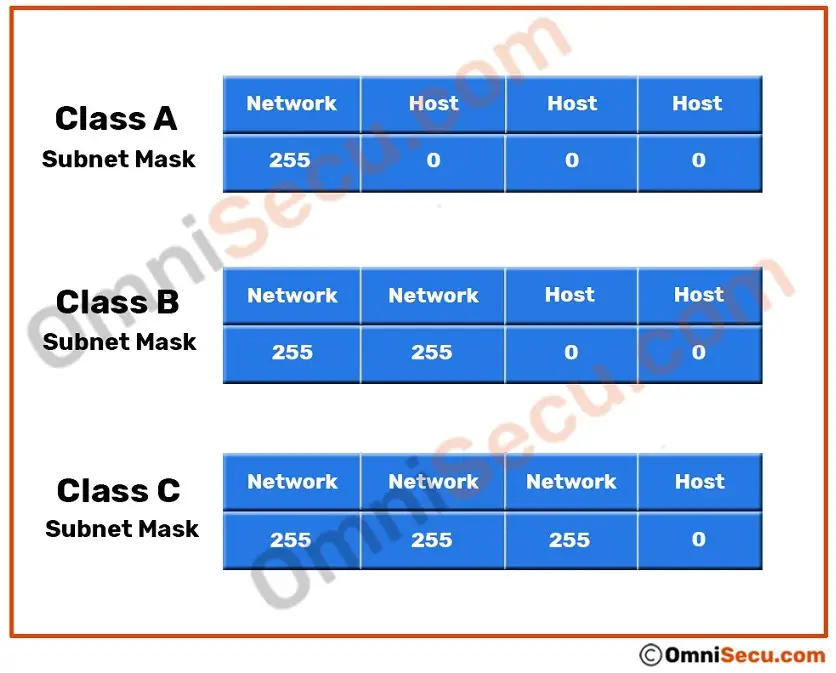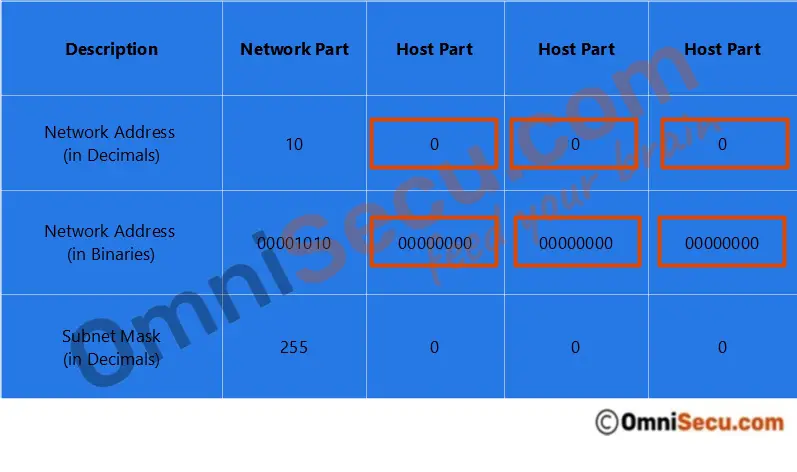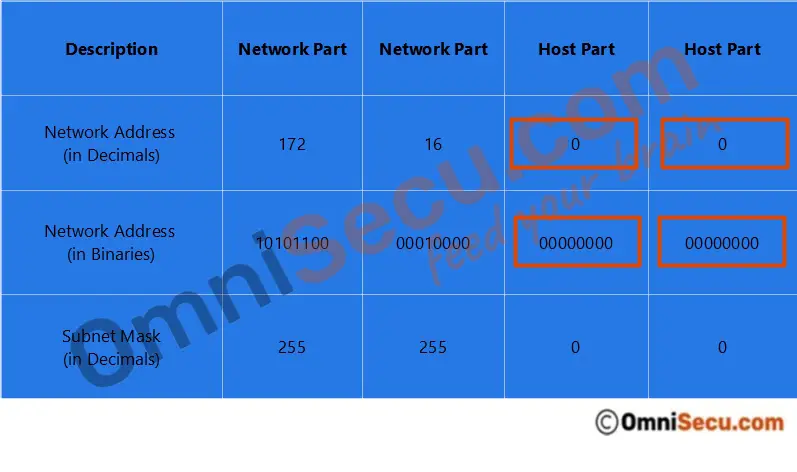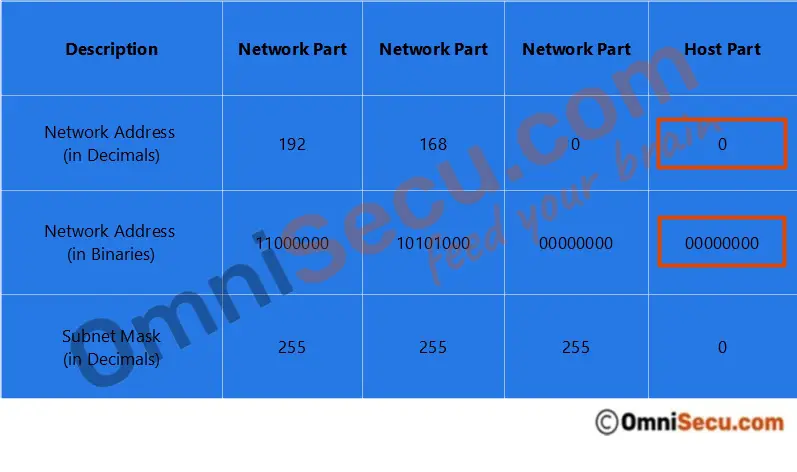What is network address
A network address in IPv4 is a special address which is used to uniquely identify a network. Routers use network address to identify a network. Routing table (a table maintained by routers) contain network addresses and additional information about how to reach that network.
A network address is a special IPv4 address where all host bits zero.
Let’s learn what is network address with examples of Class A, Class B and Class C IPv4 networks. Default subnet masks of Class A, Class B and Class C networks are given below.
- For Class A network, the first octet belongs to the network part and remaining three octets belongs to the host part. So, the default subnet mask of a Class A network is 255.0.0.0.
- For Class B network, the first two octets belongs to the network part and remaining two octets belongs to the host part. So, the default subnet mask of a Class B network is 255.255.0.0.
- For Class C network, the first three octets belongs to the network part and remaining one octet belongs to the host part. So, the default subnet mask of a Class B network is 255.255.255.0.
To understand the concept clearly, refer below image.

Network address is the first address of an IPv4 address block. Network address address of an IPv4 addres block is found by setting all the host bits as binary number, "0".
Network address of a Class A network
Let us take an example of IPv4 Class A network 10.0.0.0. Note that 10.0.0.0 is the first IPv4 address in its block. We have already learned that for Class A network, first octet belongs to network part and remaining three octets belongs to the host part. So, the default subnet mask of a Class A network is 255.0.0.0.
The network address 10.0.0.0 is obtained by keeping all host bits as binary number "0". Please refer below image.

Network address of a Class B network
Let us take an example of IPv4 Class B network 172.16.0.0. Note that 172.16.0.0 is the first IPv4 address in its block. We have already learned that for Class B network, first two octets belongs to network part and remaining two octets belongs to the host part. So, the default subnet mask of a Class B network is 255.255.0.0.
The network address 172.16.0.0 is obtained by keeping all host bits as binary number "0". Please refer below image.

Network address of a Class C network
Let us take an example of IPv4 Class C network 192.168.0.0. Note that 192.168.0.0 is the first IPv4 address in its block. We have already learned that for Class C network, first three octets belongs to network part and remaining one octet belongs to the host part. So, the default subnet mask of a Class C network is 255.255.255.0.
The network address 192.168.0.0 is obtained by keeping all host bits as binary number "0". Please refer below image.
